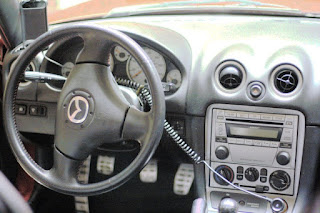In a previous post I explained the reasons why all devices should have their code source available under a license that at least permits to modify it. For devices that are meant to be integrated with third party software, an emulator should also be available.
I see this problem all the time: VoIP vendors obviously want their phones integrated in whatever software VoIP provider are deploying, but do not provide any reasonable solution to repetitively test the integration of these devices. It starts at development time: A developer can certainly get on its desk the minimal 3 phones that are needed to test most call scenarios, but it gets quickly annoying to have to repetitively pick up and answer these phones to test the code. Even if all the annoyances that come with this did not matter (noise, cost, space on desk etc…), we live in a world were automatic regression testing is (or should) be mandatory, and there is not much of it that can be done when using a real phones. In the beginning of VoIP we only had VoIP adapters (into which you plug a Plain Old Telephone Service – POTS), and it was relatively easy to use a voice modem in place of the POTS to build an emulator, but now these kind of adapters are only used for fax machines and all the other devices are VoIP phones. To automatize the usage of these phone we need a way to press buttons, inject and extract audio and sometimes video streams without any user intervention. Some people develops hardware solutions based on various micro-controllers, Arduino and others, but the point is that providing a reliable emulator should be the responsibility of the hardware vendor.
And these days it is not as difficult as it was in the past to do so. More and more embedded designs are built around Embedded Linux which has its own emulator, QEMU. For example all the Android devices provided by Google can be emulated this way, making it easy to repetitively test an application for these devices. A few years back I used this to show a demo that involved three Android phones, all simulated in a laptop and real devices were only used to demo the quality of the audio. That made the demo easier to follow, and far easier to set up.
But the point of an emulator is that it should be running the exact same software than the real device, so the first thing that an vendor must do is to add its hardware into the QEMU emulator. And that is unfortunately a task that can be easily done only by the vendor, as a lot of the times the datasheet for the hardware is only available under NDA. For the Nephelion project – which will be distributed with emulator and source code for its device – we were not able to build an emulator using the same exact binary because of this reason. We have plans to switch to hardware that will be easier to emulate, but there is still another major issue that will prevent us to get an emulator that is 100% identical to the real hardware:
The Nephelion device is a USB gadget, but QEMU does not permit to connect the gadget inside the guest and make it visible in the host as if is was a real device. There was some experimental patches doing this a long time ago around the Openmoko project, but it seems that these patches were never integrated into QEMU.
We are using usbip, which makes our device emulator again different from the real thing as the code inside the device now has to detect that it is running on an emulator so it can start the usbip daemon and bind the dummy hcd to it. And that’s without even talking about the fact that usbip does not yet support USB 3.0.
So for now we have an emulator that is probably good enough for development and testing but there is too many differences with the real device to consider it a complete replacement that can detect the same range of problems.





